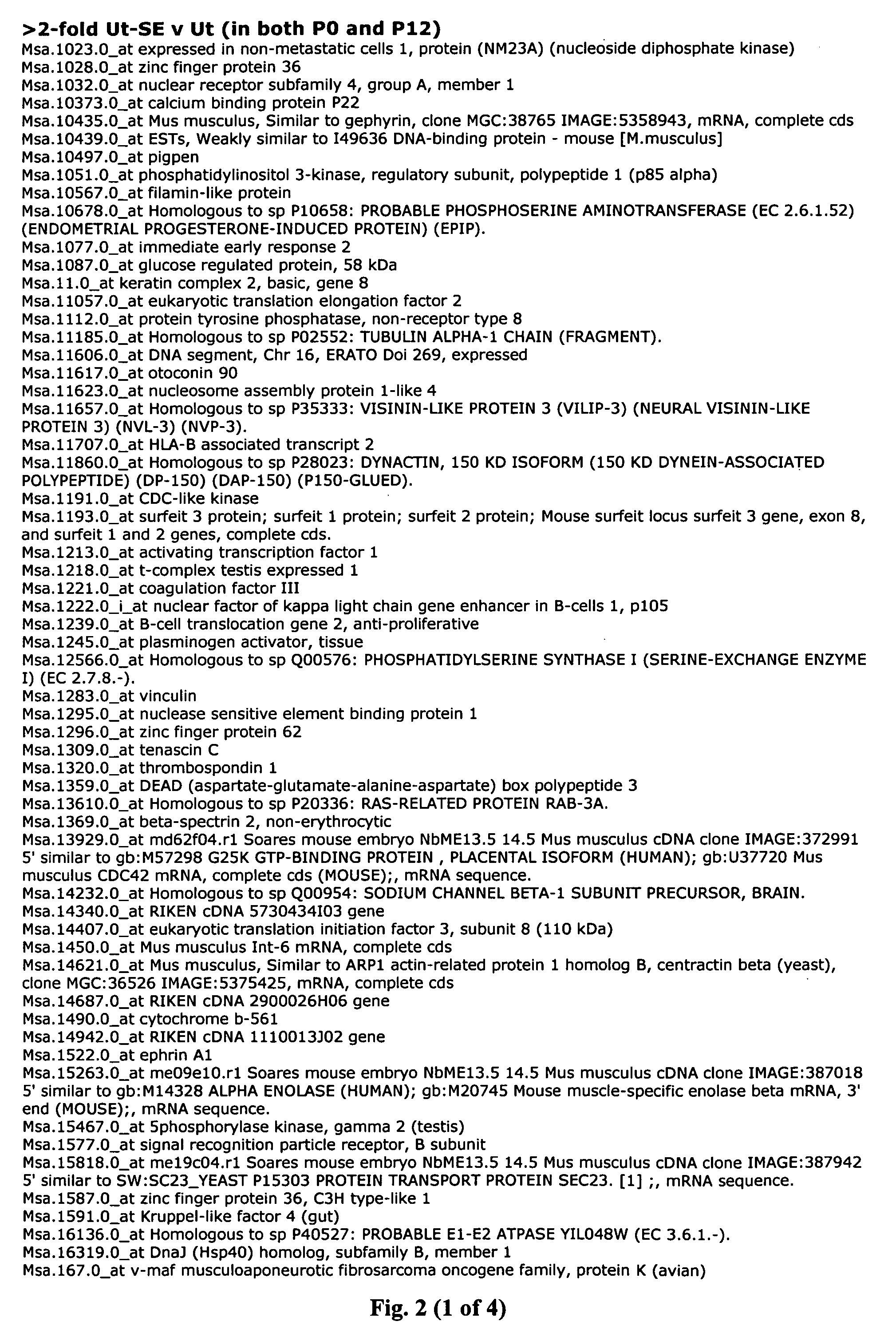Methods and products related to the production of inner ear hair cells
a technology of inner ear hair cells and hair cells, which is applied in the direction of genetic material ingredients, animal repellents, viruses/bacteriophages, etc., can solve the problems of affecting the hearing function of the hearing impaired, and unable to identify the gene that is required for cell cycle arrest in fully differentiated hair cells
- Summary
- Abstract
- Description
- Claims
- Application Information
AI Technical Summary
Benefits of technology
Problems solved by technology
Method used
Image
Examples
example 1
Identification of Cell Cycle Regulators in the Developing Utricle
[0186] To identify cell cycle regulators with potential roles in hair cell development GeneChip analysis was used to study the gene expression patterns of the developing mouse utricle. The whole utricle is a relatively simple sensory organ, consisting of the hair cells, the supporting cells and the stromal tissues (FIG. 1). Previous studies based on the incorporation of tritiated thymidine showed that the peak of thymidine labeling occurs between E14-E15 in the utricular hair cells and supporting cells (Ruben, 1967). Therefore, developing mouse utricles at E14, E15, E17, P0, P2, P6, and P12 were collected for the GeneChip analysis. In order to understand the expression pattern in the utricular sensory epithelia cells, whole utricles from P0 and P12 mice were also treated with thermolysin, and only the sensory epithelia were isolated for GeneChip hybridization. In addition, adult mouse retina and heart samples, as well...
example 2
[0233] In fish, amphibians and birds, regeneration of sensory hair cells through asymmetric cell divisions of supporting cells can contribute to recovery of hearing and balance after hair cell loss caused by trauma or toxicity (J. T. Corwin, D. A. Cotanche, Science 240, 1772 (1988); B. M. Ryals, E. W. Rubel, Science 240, 1774 (1988)). Mammalian hair cells do not spontaneously regenerate, even though supporting cells in vestibular sensory epithelia retain a limited ability to divide (A. Forge, L. Li, J. T. Corwin, G. Nevill, Science 259, 1616 (1993); M. E. Warchol, P. R. Lambert, B. J. Goldstein, A. Forge, J. T. Corwin, Science 259, 1619 (1993)). Consequently, hair cell death in mammals often leads to permanent hearing and balance impairment.
[0234] As the inner ear develops, hair cell progenitor cells exit from the cell cycle and, like neurons, terminally differentiate. Negative cell-cycle regulators apparently maintain the postmitotic status of hair cells and contribute to their te...
PUM
| Property | Measurement | Unit |
|---|---|---|
| temperatures | aaaaa | aaaaa |
| humidity | aaaaa | aaaaa |
| humidity | aaaaa | aaaaa |
Abstract
Description
Claims
Application Information
 Login to View More
Login to View More - R&D
- Intellectual Property
- Life Sciences
- Materials
- Tech Scout
- Unparalleled Data Quality
- Higher Quality Content
- 60% Fewer Hallucinations
Browse by: Latest US Patents, China's latest patents, Technical Efficacy Thesaurus, Application Domain, Technology Topic, Popular Technical Reports.
© 2025 PatSnap. All rights reserved.Legal|Privacy policy|Modern Slavery Act Transparency Statement|Sitemap|About US| Contact US: help@patsnap.com



